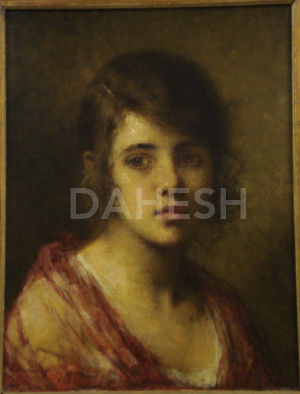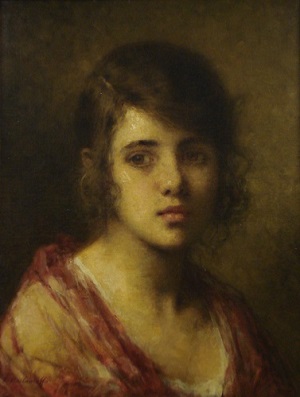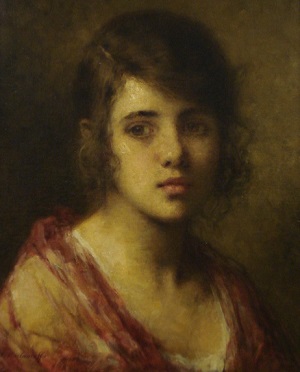- About
- Visit
- Exhibitions
- Collection
- Overview
- Search the Collection
- Recent Acquisitions
- SPOTLIGHT ON …
- Bouguereau’s “Amiable” Pictures Cross the Atlantic
- Back to Work
- The Allure of Animals in Academic Art
- Classical Mythology in 19th-century French Art
- Celebrities: Portrait medals in 19th-Century France
- Oriental “Native Types” from the Dahesh Collection
- Recording Islamic Architecture and Design
- French Natural Selections
- Painting Piety from the Dahesh Collection
- About Face: Learning to Draw Emotion through Expressive Heads
- From St. Petersburg to Paris: The Education of Russian Artists in France
- Picturing the News: The Birth of the Illustrated Press
- Egyptomania: 19th Century Depictions of Ancient Egypt
- The Franco-Prussian War and Its Aftermath in French Art
- Painting Pompeii: From Neoclassicism to the Néo-Grecs
- The Spanish Orient and Henri Regnault (French, 1843–1871)
- Women Artists Who Dared II: Jeanne Thil (French, 1887–1968) and Marie Hadad (Lebanese, 1889–1973)
- Women Artists Who Dared I: Rosa Bonheur (French, 1822–1899) and Elizabeth Gardner Bouguereau (American, 1837–1922)
- Peder Mork Mønsted’s (Danish, 1859–1941) Poetic Views of Nature
- Publications
- Programs
- Shop
- News
Search Results for: ‘harlamoff’
-
Alexei Harlamoff, A Young Beauty
Alexei Harlamoff (Russian, 1840–1925)
A Young Beauty
Oil on Canvas, 17 3/4 x 14 1/2 in.
Signed lower left : A. Harlamoff.
1997.23
A Young Beauty is an example of the numerous images of beautiful girls and young women that dominate Harlamoff’s oeuvre. These images mostly consist of bust- or three-quarter-length views of attractive, solitary young girls, set within an indeterminate space. In A Young Beauty, a curly-haired youth, draped with a pink shawl, sits before an indistinct brown background. Depicted from the chest up, she gazes out of the picture plane, giving the image the appearance of a portrait. However, such images were not created to reflect individual likenesses, but idealized representations of youthful female beauty. Harlamoff often repeated the same likeness over and over, so that his young beauties can largely be categorized by their different phenotypes. Although they dominate his artistic output, these imaginings are not unique to Harlamoff’s oeuvre. A Young Beauty is part of a larger late-19th-century trend in which artists increasingly created images of attractive young girls not as portraits, but for the contemplation of feminine beauty alone.
-
From St. Petersburg to Paris: The Education of Russian Artists in France

In the 1860s and 70s, a new generation of Russian artists ventured to Paris, joining classes at the École des Beaux-Arts, studying with respected masters, and exhibiting works at the Paris Salon. Studying in Paris offered these artists the chance to refine their technical skills and explore subjects underrepresented in Russian art. At that time, a new movement centered on a group of artists known as the Wanderers (Peredvizhniki) introduced bold themes into Russian art. In 1863, this group of 14 students quit the Imperial Academy in protest of its strict adherence to Neoclassical techniques and themes, and began painting Realist images of contemporary Russia. For many artists, trained at the Imperial Academy but mentored by the Wanderers, studying in Paris gave them the chance to explore subjects and issues outside of this atmosphere.
For Vasily Vereshchagin (1842–1904), moving to Paris in 1864 was a means to refine his technical grasp of painting and engage with France’s thriving school of Orientalist art. Vereshchagin pursued both of these threads while studying at the École des Beaux-Arts under Jéan-Léon Gérôme (1824–1904), perhaps the best known Orientalist painter in France at the time. Vereshchagin studied with Gérôme intermittently for three years, and they remained in contact for life––Vereshchagin later lent Gérôme props for his bronze sculpture Tamerlane (1898, Private Collection). Though there are striking differences between Gérôme and Vereshchagin, many of their works show interesting thematic and technical affinities––see for instance Gérôme’s Slave Market (1866, Clark Art Institute) and Vereshchagin’s Selling a Slave Boy (1872, Tretyakov Gallery).
Ilya Repin (1844–1930) moved to France in 1873 using the scholarship he had been awarded after winning the Imperial Academy’s gold medal for his painting on the subject of The Raising of Jairus’s Daughter (1871, Russian State Museum). Though Repin was a darling of both the Academy and the Wanderers, in Paris he became interested in Impressionism and scenes of daily life––much to the chagrin of his mentors. Asserting his independence, Repin painted a portrait of his wife “à la Manet” (1876, The State Russian Museum), a plein air scene in Normandy, Horse for Collecting Stones (1874, Radishchev Art Museum), and also exhibited a scene of French modern life, A Parisian Café, at the Salon of 1875 (Private Collection). Unfortunately Russian critics panned the latter work, and after Repin returned home in 1876 he resumed painting Academic and Peredvizhnik works.
Like Repin, Alexei Harlamoff (1840–1925) won a gold medal at the Imperial Academy in 1868, which enabled him to travel to Paris, where he resettled and enjoyed a successful career. Harlamoff studied with Léon Bonnat (1833–1922), as many Russian and other foreign artists did, and many of his works depict a theme popular with his master, charming portraits of peasant girls. Subjects like Harlamoff’s A Young Beauty (1997.23) had become popular with French artists because they sold well––William-Adolphe Bouguereau (1825–1905) was a prime example of this success. However, Harlamoff’s works failed to appeal to his fellow Russians; Repin criticized Harlamoff for painting “practically like a born Frenchman.”
Painters like Harlamoff, Repin, and Vereshchagin represent some of the better known artists who studied in Paris during the 1860s and 70s, but there were many others. Russia’s artistic connections with France also persisted after this vibrant period, reaching something of apogee at the beginning of the 20th century, when the aesthete Sergei Diaghilev organized the Ballets Russes as well as the first major exhibition of Russian art in France (1906) at the Petite Palais.
-
Artwork of the Month
Alexei Harlamoff (Russian, 1840–1925)
A Young Beauty
Oil on Canvas, 17 3/4 x 14 1/2 in.
Signed lower left: A. Harlamoff.
1997.23
Alexei Harlamoff is best known for his numerous images of young women, which were sought by collectors in England, France, and the United States. Though born in Russia and trained at the Academy of Fine Arts in St. Petersburg, Harlamoff lived most of his life in Paris (where he briefly trained with the renowned painter and teacher Léon Bonnat in 1872). He received favorable critical reception in France — most notably from the writer and critic Émile Zola, who praised him in his Salon reviews of 1875 and 1876 — but was attacked by many Russian critics for his light subject matter. He was seen as abandoning the ideals of his homeland by not addressing social material, as voiced by the Russian critic Vladimir Stasov, “For all I care this French Harlamoff can live in Paris and captivate the French with his allure; here he is entirely unsuitable, here one needs something quite different.” Because of the perception that he was “too Western,” Harlamoff was largely ignored by Russian art history during the Soviet era.
A Young Beauty is an example of the numerous images of beautiful girls and young women that dominate Harlamoff’s oeuvre (though he did also create large portraits and genre scenes). These idealized images mostly consist of bust- or three-quarter-length views of attractive, solitary young girls, set within an indeterminate space. However, these pictures were not created to reflect individual likenesses, but were idealized representations of youthful female beauty — and part of a larger late-19th-century trend in which artists increasingly created images of attractive young girls for the purpose of contemplating feminine beauty alone.


